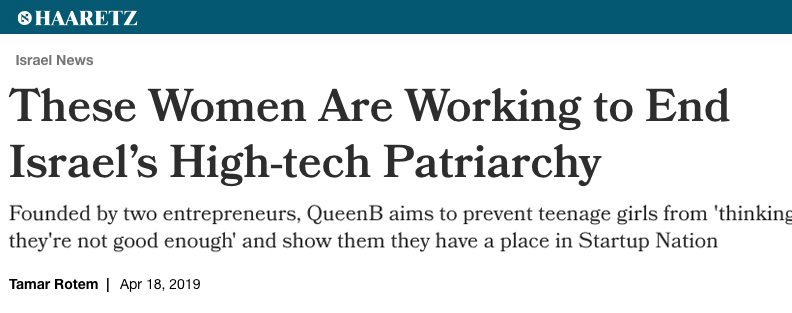
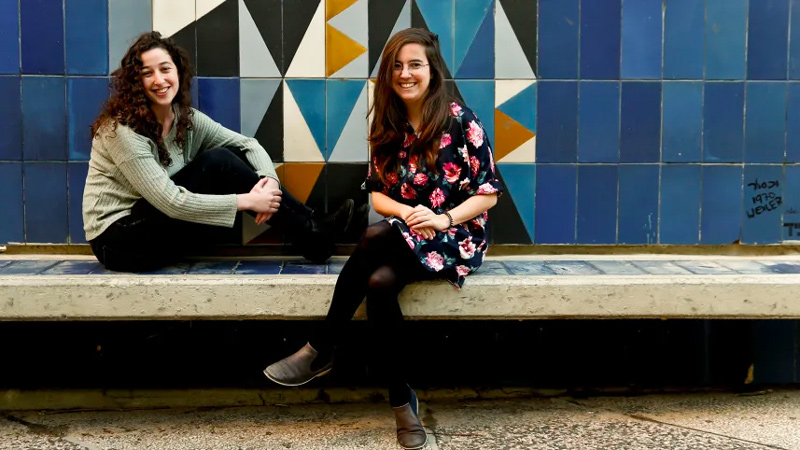 QueenB founders Yasmin Dunsky, left, and Noga Mann pose for a photo, March 17, 2019.
QueenB founders Yasmin Dunsky, left, and Noga Mann pose for a photo, March 17, 2019.
Noga Mann, 28, and Yasmin Dunsky, 26, learned how to program at a young age.
The women, who both hold degrees in computer science from Hebrew University, mention this fact casually, as if programming and computers weren’t normally thought of as mostly male fields.
Their attitude about it has a lot to do with how they grew up. Dunsky’s older sister, who studied programming in high school, taught her the programming basics, whetting her appetite for more. Mann’s father is a programmer, but she learned how to do it on her own, with the help of a book, once she got her heart set on establishing an online fan club for her idols as a girl: the twin actresses Mary Kate and Ashley Olsen.
Today, Dunsky and Mann run QueenB, an organization that offers after-school programming courses for middle school girls. The name deliberately alludes to Beyoncé, a major symbol of girl power.
The pair have managed to make a field considered highly technical into something that seems fun and clever, thanks in part to the leaders of the courses – college-age women (who look a lot like high-schoolers themselves) who are studying computer science.
When the program began two years ago, there were 20 teenage girls enrolled, all studying at the Hebrew University. Now there are 400, and they also study at Tel Aviv University, the Technion-Israel Institute of Technology, Haifa University and Ben-Gurion University. Supporters of the program include high-tech companies like Mobileye, Dropbox, Varonis and more.
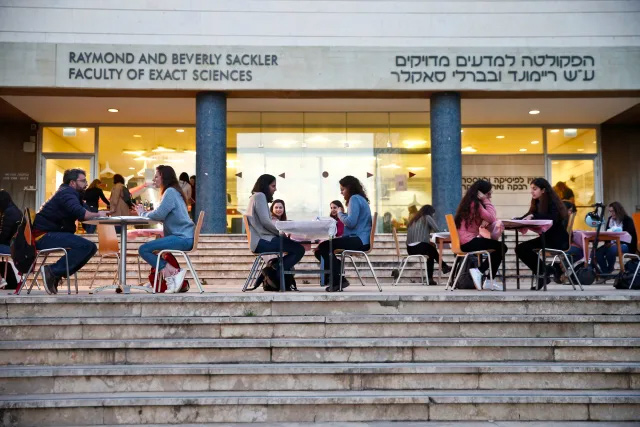 Students participate in a QueenB session, March 17, 2019.
Students participate in a QueenB session, March 17, 2019.
When QueenB comes to schools to recruit girls for its program, the event feels a lot like when the Scouts come to school to drum up interest. But instead of khaki, the theme color this time is a trashy light pink, the same shade as the QueenB flyers and the T-shirts worn by its instructors. Cotton candy is given out to the girls who come to hear about the program. But despite all the candy-colored trappings, the QueenB women are aiming high. They say their goal is “to boost the percentage of women in high-tech.”
Math dropouts
To that end, their more immediate sights are set on getting more young women to study computer science in university. Many of the girls who study five units (the highest level) of computer science in high school have abandoned the subject by the time they reach university. In the most recent academic year, 9,293 high school students studied computer science: 6,212 boys and 3,081 girls, a third of the total, but women account for just a quarter of computer science majors in the universities.
“We want to effect a mental and conceptual change,” says QueenB CEO Efrat Weintrob. Therefore, the organization directs its efforts at girls who are about to select their major subjects for high school, to encourage them to see computer science as a potential lifelong profession.
“Programming is an important and relevant tool that opens doors,” says Weintrob. “Usually, men choose to go into it. Girls tend to think of the technological fields as ‘not my thing.’ It’s a lucrative industry and it’s a shame that more women aren’t benefiting from it.” One result, she says, is that “resources are not divided equally. Women end up being excluded from a lot of things, and this could be avoided.”
QueenB is similar in some ways to another program designed to promote women in programming – She Codes, which began as an independent initiative by Ruth Polachek. She Codes has opened some branches for teens, but its main focus is women who are older than that. It also operates differently, with open lessons that do not require full attendance. QueenB operates more along the lines of a youth movement, and could be likened to the American organizations Girls Who Code, which calls itself a youth movement and has 90,000 girls who are learning to program.
One thing that QueenB and the American organization have in common is that their courses aren’t only designed for the top students.
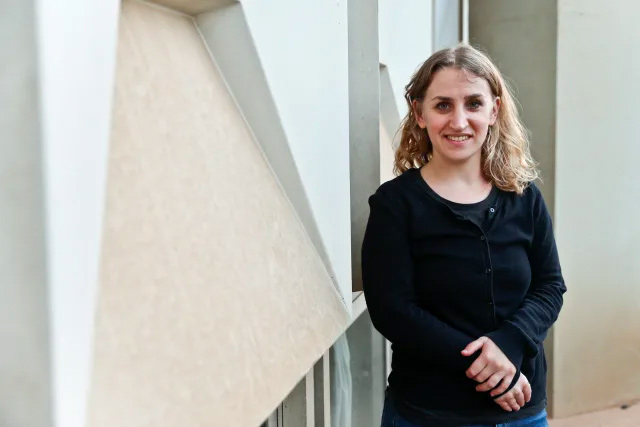 QueenB CEO Efrat Weintrob poses for a photo, March 17, 2019.
QueenB CEO Efrat Weintrob poses for a photo, March 17, 2019.
“We’re looking for the missing women, for those who don’t come with knowledge and access to this from home,” says Weintrob. “The best example is girls who study four units of math. They think they’re not good enough for computer science. Using the method that we’ve developed, we want to give these girls the feeling that they are indeed capable.”
Weintrob also says the program aims to reach a mixed audience, and they appear to be succeeding: At Givat Ram in Jerusalem, religious and secular girls study together, and in Haifa one sees Jewish and Arab girls participating together as well.
A misguided stigma
Mann and Dunsky intuitively felt there was a connection between the choice of a study track in high school and university studies in computer science. Two senior researches in computer science instruction, Prof. Michal Armoni of the Weizmann Institute and Prof. Judith Gal-Ezer of the Open University, decided to study the relationship between the two things. Their research included an extensive, in-depth survey of first-year computer science students at Israel’s five major universities.
“The goal was to examine girls’ opinions about their choice of a field before they begin their studies,” says Armoni. So the questionnaires were distributed at the start of the first hour of the first course in the first year. They found that computer science studies in high school have a substantial impact on the decision to specialize in that field in university, and that this connection is especially critical for women.
Some 420 students completed the questionnaires. 63% of them (66% of the men and 55% of the women) had done a computer science track in high school. More of the female than male students reported that their teacher had positively influenced their enjoyment of computer science studies. Armoni explains that more boys have had earlier exposure to computers. “Many more boys than girls began programming when they were quite young.”
Why do students choose computer science? The answers were not surprising: career opportunities, money and prestige. More interesting are the reasons for staying away from the field – Armoni says that various studies have shown that women often give up on studying computer science due to misconceptions and the stigma attached the field. Men, meanwhile, are frequently drawn to the field because of a fondness for computer games. Women, by comparison, were hardly involved in these games. One of the study’s conclusions was that “if taught properly in elementary school and middle school, it can help girls become interested in the field and succeed in it,” says Armoni.
Asked whether after-school programming courses can draw more girls into the field, Armoni shifts uncomfortably. She says she doesn’t like the way programming is often totally identified with computer science for, as she describes it, computer science is a challenging field that entails diagnosing and characterizing problems and finding solutions, and entails theoretical and not only practical science. Mann and Dunsky say, however, that for them, “it’s important to expose as many girls as possible to a popular language that can help them find a profession in the future.”
Dunsky and Mann recently retired from direct management of the organization (they are still on the board) in order to focus on the startup they founded. They haven’t abandoned the subject though – their company is building a pedagogical platform that will enable kids to teach themselves programming using a cell phone app. Their startup is called Frizzle – after Mrs. Frizzle, the cheerful science teacher on the “Magic School Bus” animated series.
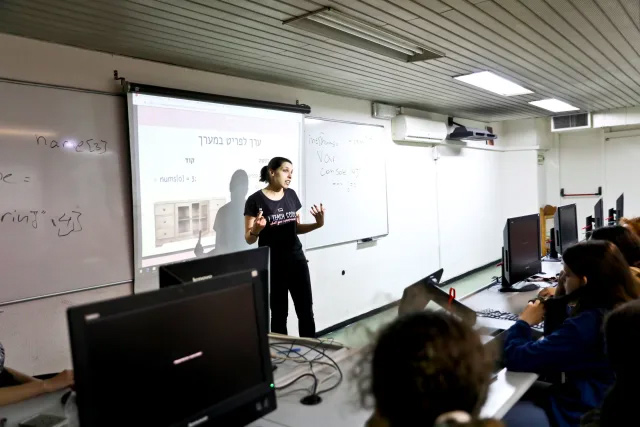 A QueenB instructor speaks during a session, March 17, 2019.
A QueenB instructor speaks during a session, March 17, 2019.
The two women have been working together since they met at university and talked about their experience of being in the minority in a largely male field of study, and wondered how to close that gender gap. “We noticed that not only are girls a minority in the field, they are also treated differently,” says Dunsky. “The assumption is that girls know less than boys, and they also relate to themselves the same way.”
“Girls don’t speak in class nearly as much as the boys,” adds Mann. “They’ll choose not to sit for an exam at all and to just take it the second time it’s offered, because they don’t want to deal with failure, even when the right thing to do would be to at least try and to gain experience.” This sort of experience naturally affects the way one learns, and one’s employment later on.
Dunsky and Mann were familiar with this feeling from high school, when each was one of the few girls in a class of 30 boys. The numerical inequality is reflected in the labor market too. “Soon, 80 percent of mobs will require technological abilities, and the school system doesn’t seem to be in sync with this,” says Dunsky. “We realized that if we want to get to the root of the inequality in high tech, we have to start early, before kids select their high school track.”
What spurred them to take action beyond complaining to one another over coffee? “We both come from the Scouts movement,” says Mann. “We enjoyed turning ideas into the real thing.” When they shared their idea with their female classmates, the response was incredible, they say.
“They had all gone through the same thing and they were immediately ready to help and contribute,” says Mann. Even with their heavy course loads, the women were ready to make time to teach in the after-school program, “because they understood that they could have a significant impact.”
Hackathons
Now the instructors receive a stipend for studies. QueenB is also working to build a supportive community for women computer science students by creating a Facebook group and other activities like hackathons and employment fairs (one was held two weeks ago), as well as job interview workshops and simulations. “The issues that women face in high tech don’t end once they’re hired,” notes Weintrob. “There, too, they’re a minority amid the male majority.”
The choice of women college students as instructors was not random. Here, too, Man and Dunsky had the Scouts model in mind. “The counselors in the youth movement are models for the girls,” says Dunsky. “At this age they tend to be influenced by someone who si a little older than they are, who is charismatic and – above all – cool. When they see this young woman standing there telling them how much fun programming is, it has an effect on these girls.”
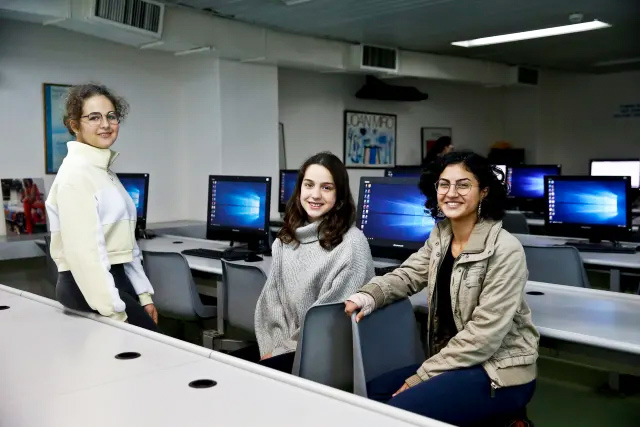 QueenB participants Amalia Sukri, left, Noam Segev, center, and Or Farhedian pose for a photo, March 17, 2019.
QueenB participants Amalia Sukri, left, Noam Segev, center, and Or Farhedian pose for a photo, March 17, 2019.
At a QueenB course a couple of weeks ago, college student Maya Ellenblum was giving a lesson in programming. Every hesitant question from a girl was met with encouragement. “It’s good that you asked, because if you are asking, someone else is probably thinking about the very same thing,” she told one girl, for example, and the questioner beamed.
Eighth-graders Noam Segev and Amalia Sukri from Tel Aviv and Or Farhedian from Holon had no prior knowledge of programming. Segev and Sukri came to the program after hearing about it in school, and Farhedian’s family had urged her to try it. They say their friends didn’t think it was such a big deal that they’d decided to learn programming, but when they heard it was for girls only, the responses were much more emotional. They think it’s “a pretty smart thing to do, actually.”
Segev says boys have a lot more confidence than girls do in class: “Girls always say, ‘Excuse me, may I say something?’ They don’t even notice that they’re apologizing.”
Sukri agrees: “Most of the girls wouldn’t come if there were boys here too, because it would be a lot harder to ask questions.” Will they choose a computer science concentration in high school? It’s too early to tell, the girls say.